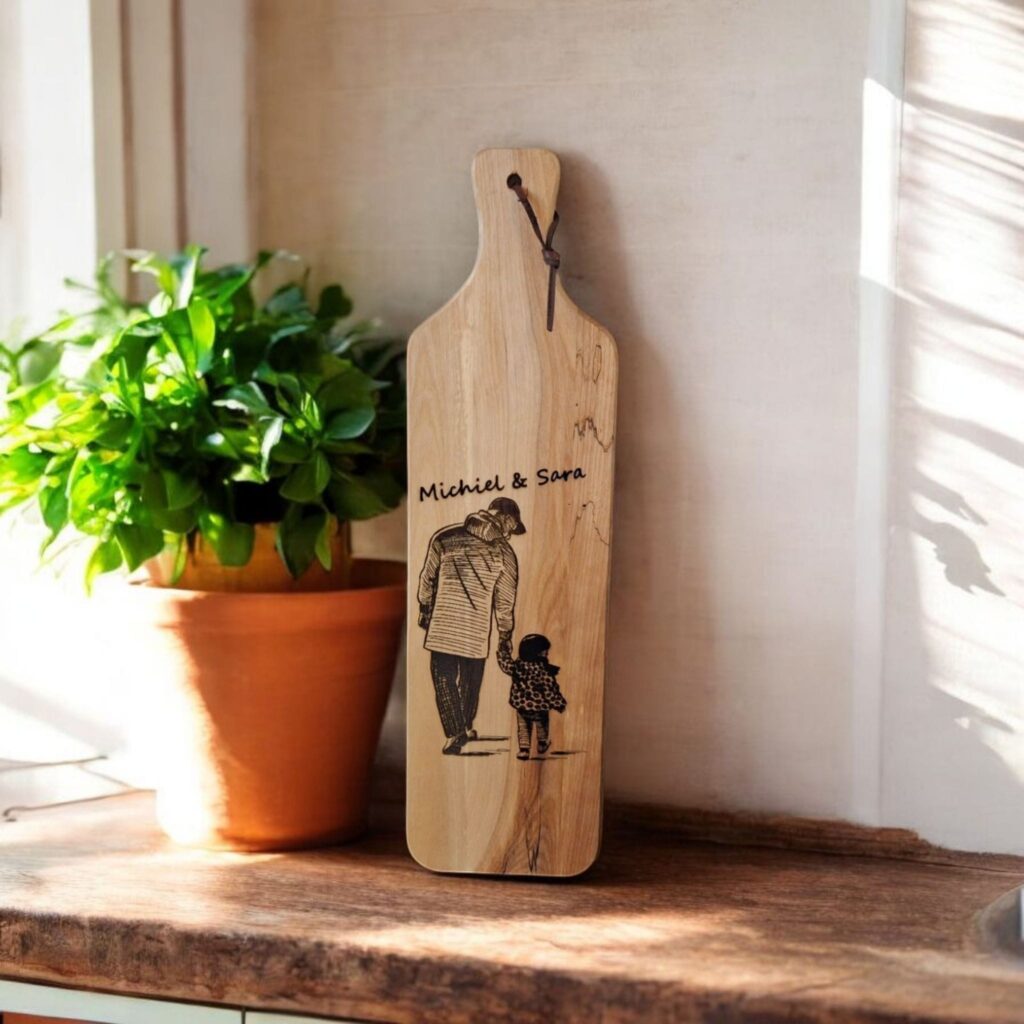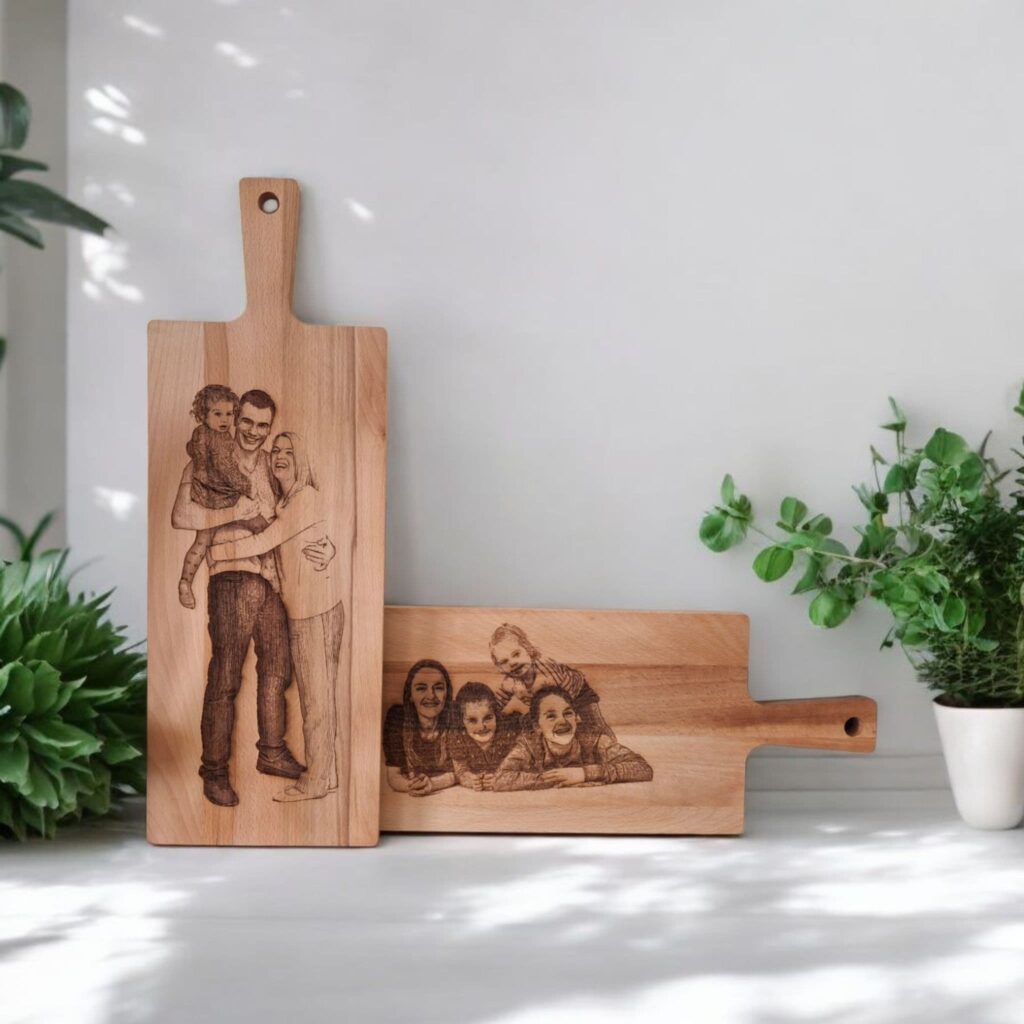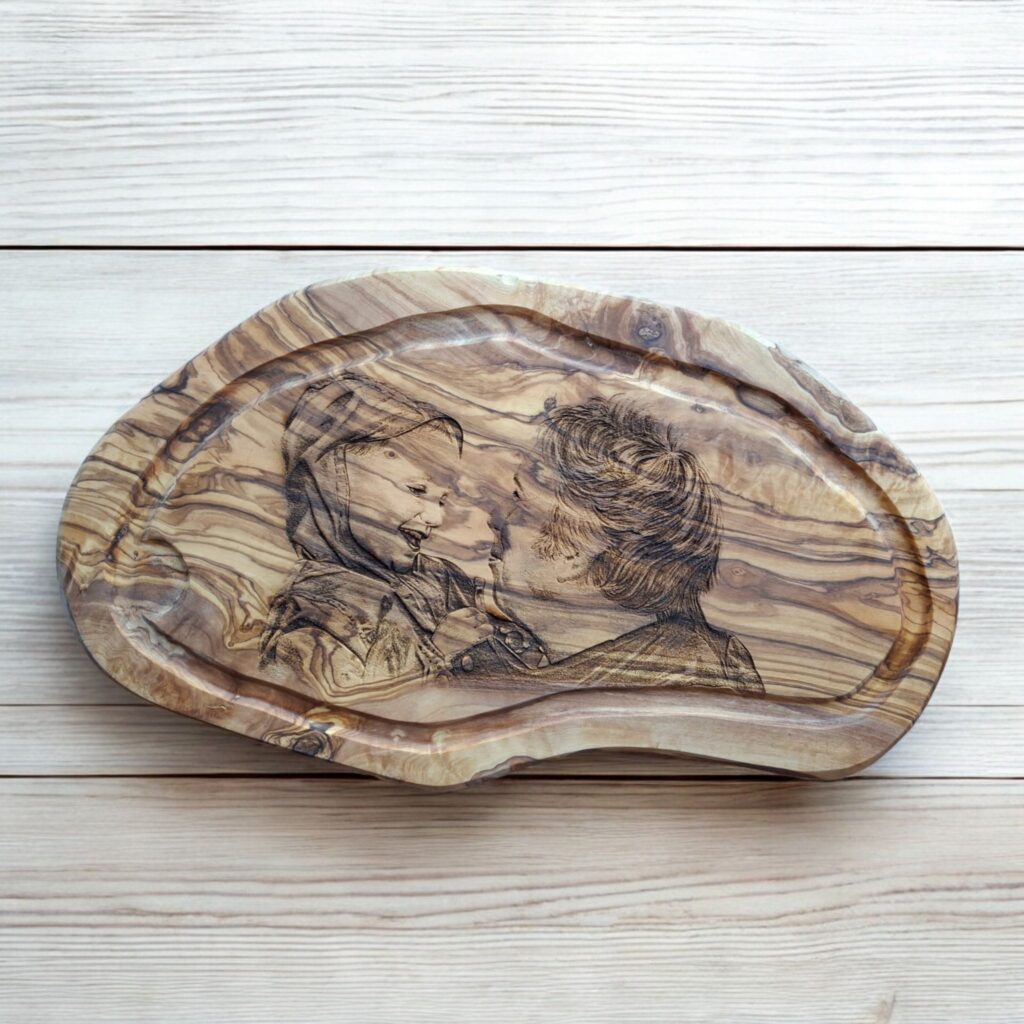Did you know that more than 70% of people feel stressed when organizing a get-together or party? It's understandable; you want everything to be perfect, from the atmosphere to the appetizers. In this blog post, we're going to help you relieve that stress by teaching you how to make the perfect serving board with a cutting edge. A serving board is not only a culinary surprise for your guests, but it also offers a practical solution to keep everything neat and organized. We share the best ingredients, tips for formatting and helpful suggestions to leave a lasting impression with friends and family. Let's get started together!
The basics of a serving board
A well-assembled serving board is a true art form. It is the perfect way to host friends and family, and it provides an opportunity to combine different flavors and textures. Below, we discuss the essential ingredients for a serving board and provide tips for finding a balance.
Essential Ingredients
Cheeses
Cheeses are the stars of any serving board. Not only are they tasty, but they also offer variety in texture and flavor. Here are some excellent choices:
- Brie: A creamy, soft cheese that is perfect to pair with a sweet chutney, such as Tartine's.
- Parmesan: A hard cheese with an intense flavor. Try Grana Padano for a slightly milder option.
- Gorgonzola: A blue cheese that adds a powerful flavor. Pair with honey for a delicious balance.
Meats
Cured meats offer a savory component to your serving board. Choose a mix of flavors and textures:
- Prosciutto: Thin slices of this Italian ham are a must-have. Try Parma or San Daniele for the best quality.
- Salami: Choose a spicy salami such as Nduja for an extra kick.
- Chorizo: This Spanish sausage adds a smoky flavor. Go for the Sarta variety for intensity.
Nuts
Nuts are an excellent addition to your serving board, offering a crunch that complements the softer ingredients. Consider the following options:
- Almonds: Toasted and salted for extra flavor.
- Walnuts: Perfect when paired with soft cheeses.
- Pistachios: For unique color and flavor.
Dips
Dips are essential for complementing the flavors on your serving board. Here are some delicious choices:
- Hummus: This chickpea puree is versatile. Try Osem for an authentic taste.
- Guacamole: A creamy avocado dip, ideal with tortilla chips. Old El Paso offers a tasty ready-to-eat option.
- Tzatziki: A fresh yogurt sauce with cucumber and garlic, perfect for vegetables.
Vegetables
Fresh vegetables add color and a crunchy texture to your serving board. Choose:
- Cucumber: For a refreshing crunch.
- Cherry tomatoes: For a sweet bite.
- Carrots: Cut them into fun shapes for a playful presentation.
Balance between Flavors and Textures
When putting together your serving board, it is essential to strike a balance between different flavors and textures. Here are some tips for achieving this:
- Soft vs. Hard: Combine soft cheeses like brie with hard cheeses like parmesan for variety.
- Salty vs. Sweet: Provide a sweet dip, such as honey, alongside salty meats. This creates a harmonious taste experience.
- Crunchy vs. Creamy: Add crunchy nuts and fresh vegetables to creamy cheeses and dips for an interesting texture.
Example of a Balanced Drinking Board
| Ingredient | Type | Brand/Option |
|---|---|---|
| Brie | Cheese | Tartine |
| Parmesan | Cheese | Grana Padano |
| Prosciutto | Meats | Parma |
| Salami | Meats | Nduja |
| Almonds | Nuts | Roasted and salted |
| Hummus | Dip | Osem |
| Cherry tomatoes | Vegetables | Fresh |
By following these guidelines, you can create a serving board that is not only visually appealing, but also offers a great culinary experience.
The role of the cutting edge
The cutting edge of a serving board is an often underrated element, but it plays a crucial role in both the functionality and aesthetics of the board. In this section, we discuss how the cutting edge helps prevent spills and makes it easier to cut appetizers. In addition, we will look at different types of cutting edges and how they can enhance the presentation of your serving board.
Advantages of a cutting edge
Spill prevention
One of the main benefits of a cutting edge is preventing spills. When you cut food, such as cheese or meat, juices or crumbs can easily fall off the plate. The cutting edge acts as a kind of barrier that keeps these liquids and fragments within the de-marked area.
- Practical example: ChefsChoice' s Bamboo Drinking Board has a raised cutting edge that prevents cheese and olive juices from spilling onto your table. This makes it an ideal choice for a festive drinks evening.
Easier cutting
The cutting edge also provides a practical solution for cutting snacks. The height of the edge ensures that your cutting is more controlled, reducing the risk of damage to your table or worktop.
- Practical example: Home & Style' s Acacia Wood Cheese Board has a specially designed cutting edge that makes cutting hard cheeses easier. The rounded corners make it easy to cut with a cheese knife without risking accidents.
Types of cutting edges
Raised cutting edges
Raised cutting edges are ideal for serving succulent foods. These edges are usually several inches high and keep liquids within the confines of the board.
- Advantages:
- Prevents spillage of liquids
- Suitable for juicy snacks such as tomatoes or melon
Recessed cutting edges
Recessed cut edges are another option and are often less visible. These edges are milled out into the board itself and offer a sleek look.
- Advantages:
- Minimalist and stylish
- Suitable for wider presentation of appetizers
Flexible cutting edges
Some drink boards are equipped with flexible cutting edges that can be adjusted to the size of the food being cut. This is especially useful for serving boards used for different types of appetizers.
- Advantages:
- Adaptable to different foods
- Ideal for varying presentations
Improving presentation
In addition to the functional benefits, cutting edges can also contribute to the aesthetics of your serving board. A well-designed cutting edge can enhance the overall look of your presentation.
- Styling tips:
- Choose a serving board with a cutting edge in a contrasting color or material, such as a combination of wood and marble, to add visual interest.
- Add small bowls to the cutting edge for dips or sauces, such as Le Creuset's Dip Bowl, to create an organized and attractive presentation.
Summary benefits
Here is a summary of the benefits of the cutting edge on a drink board:
| Advantage | Description |
|---|---|
| Prevents spillage | Keeps liquids and crumbs inside the shelf. |
| Facilitates cutting | Provides control when cutting food. |
| Various styles | Raised, embedded or flexible cutting edges. |
| Improvement of presentation | Contributes to the aesthetics of the drink board. |
So the cutting edge of your serving board is not only a practical addition, but also an essential component that contributes to the functionality and presentation of your appetizers. By making the right choice in cutting edge type and design, you can significantly improve the overall experience of your get-together moment.
Creative Formatting and Presentation of your serving board
The way you present your serving board can have a significant impact on the overall experience of your guests. An attractively presented board invites tasting and enjoying. Below are some effective tips and techniques for creatively laying out your serving board.
Variation in Heights
One of the simplest ways to add visual interest to your serving board is to play with different heights. You can accomplish this by using a variety of bowls and serving boards. For example, consider:
- Wooden Shelves: A traditional wooden board, such as IKEA's "Bamboo Cutting Board," can serve as a base.
- Serving bowls: Use ceramic serving bowls, such as Le Creuset's "Pasta Bowl," to create height. Place these on the shelf and fill them with dips or nuts.
- Standards: Use a small cake stand, such as HEMA's Tiered Cake Stand, to place snacks such as mini quiches or pastries on.
By presenting ingredients at different heights, you create a dynamic and inviting appearance.
Color combinations
Color plays a crucial role in the presentation of your serving board. Using a variety of colors makes the board more appealing and stimulates the appetite. Here are some tips for adding color:
- Vegetables and Fruits: Add colorful vegetables such as cherry tomatoes, peppers and cucumber. For fruit, choose berries, grapes or orange slices.
- Herbs: Use fresh herbs such as basil or parsley as garnishes. They not only add color, but also aroma.
- Dips and Sauces: Choose dips with different colors, such as a green guacamole, red salsa and yellow hummus (for example, The Hummus Shop's "Hummus").
Ranking of Ingredients
The way you arrange your ingredients can increase the attractiveness of your serving board. Here are some techniques to keep in mind:
- Grouping: Group similar items together, such as all cheeses or all nuts. This makes the shelf uncluttered and easy to understand.
- Variety: Provide variety between hard and soft items. For example, place hard cheeses such as aged cheese (e.g., "Beemster mature cheese") next to soft cheeses such as brie.
- Layering: Place smaller items, such as olives or nuts, in small bowls or jars. This prevents them from rolling down the shelf and gives an organized look.
Decorative Elements
Finally, decorative elements can add a personal touch to your serving board. Consider the following additions:
- Plants: Use small succulents or twigs as decoration. They give a fresh look.
- Cards: Make small cards with the names of the different cheeses or dips. This is not only informative, but also adds a stylish look.
- Napkins and Cutlery: Use colorful napkins or a beautiful wooden cutlery set, such as the "Bamboo Cutlery Set" from Dille & Kamille. This adds functionality and enhances the aesthetic.
Example of an Attractive serving board
Below is an example of how to put together an attractive serving board with specific products:
| Ingredient | Example Product | Height |
|---|---|---|
| Aged cheese | Beemster mature cheese | Low |
| Brie | Brie from le Rustique | Medium |
| Cherry tomatoes | Cherry tomatoes of the season | Low |
| Mixed nuts | Nut mix from the Nut Bar | Low |
| Hummus | Hummus from The Hummus Shop | Medium |
| Salsa | Salsa from Old El Paso | Low |
| Mini quiches | Mini quiches from the local bakery | High |
| Fresh herbs | Fresh basil | Low |
By applying these tips and techniques, you can create a serving board that is not only delicious, but also provides a visual spectacle for your guests.
Tips for the ultimate drinks experience
In conclusion, putting together a perfect serving board with a cutting edge is an art you can master with the right ingredients and presentation. With the tips and ideas discussed in this blog post, you will be well prepared to surprise and delight your guests. Remember to personalize your serving board according to your guests' preferences to create an unforgettable experience. Have fun creating your ideal serving board!



